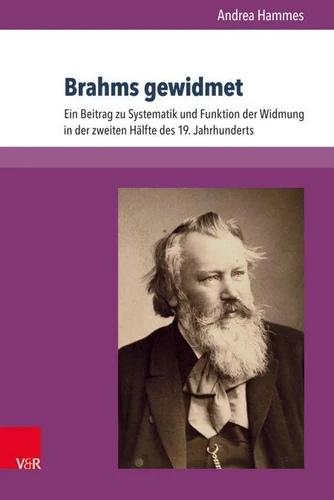Brahms gewidmet. Ein Beitrag zu Systematik und Funktion der Widmung in der zweiten Hälfte des 19. Jahrhunderts
Par :Formats :
Disponible dans votre compte client Decitre ou Furet du Nord dès validation de votre commande. Le format PDF est :
- Compatible avec une lecture sur My Vivlio (smartphone, tablette, ordinateur)
- Compatible avec une lecture sur liseuses Vivlio
- Pour les liseuses autres que Vivlio, vous devez utiliser le logiciel Adobe Digital Edition. Non compatible avec la lecture sur les liseuses Kindle, Remarkable et Sony
 , qui est-ce ?
, qui est-ce ?Notre partenaire de plateforme de lecture numérique où vous retrouverez l'ensemble de vos ebooks gratuitement
Pour en savoir plus sur nos ebooks, consultez notre aide en ligne ici
- Nombre de pages487
- FormatPDF
- ISBN978-3-8470-0437-0
- EAN9783847004370
- Date de parution19/08/2015
- Protection num.pas de protection
- Taille9 Mo
- Infos supplémentairespdf
- ÉditeurV&R Unipress
Résumé
This volume provides an extensive survey on a topic which has been largely neglected by musicological research until now. The study analyses possible implications of a dedication of musical scores, which composers used as a sophisticated approach to manipulate the reception of their work. Furthermore the phenomenon of dedication is put into context with social and musical life during the second half of the 19th century, taking into account current academic research on Johannes Brahms, as well.
Between 1853 and 1902 Brahms received almost 100 dedications of musical scores from renowned friends (such as Robert and Clara Schumann or Joseph Joachim) as well as from composers unknown today who hoped to benefit from the radiance of their prominent dedicatee. Biographical studies retrace the relations between the dedicators and Brahms to describe and explain the different ways a dedication was used to contact a prominent contemporary and respectively extend the personal and professional network.
Analytical observations of selected works trace features of a specific Brahms reception in the dedicated musical scores and complete the study.
Between 1853 and 1902 Brahms received almost 100 dedications of musical scores from renowned friends (such as Robert and Clara Schumann or Joseph Joachim) as well as from composers unknown today who hoped to benefit from the radiance of their prominent dedicatee. Biographical studies retrace the relations between the dedicators and Brahms to describe and explain the different ways a dedication was used to contact a prominent contemporary and respectively extend the personal and professional network.
Analytical observations of selected works trace features of a specific Brahms reception in the dedicated musical scores and complete the study.
This volume provides an extensive survey on a topic which has been largely neglected by musicological research until now. The study analyses possible implications of a dedication of musical scores, which composers used as a sophisticated approach to manipulate the reception of their work. Furthermore the phenomenon of dedication is put into context with social and musical life during the second half of the 19th century, taking into account current academic research on Johannes Brahms, as well.
Between 1853 and 1902 Brahms received almost 100 dedications of musical scores from renowned friends (such as Robert and Clara Schumann or Joseph Joachim) as well as from composers unknown today who hoped to benefit from the radiance of their prominent dedicatee. Biographical studies retrace the relations between the dedicators and Brahms to describe and explain the different ways a dedication was used to contact a prominent contemporary and respectively extend the personal and professional network.
Analytical observations of selected works trace features of a specific Brahms reception in the dedicated musical scores and complete the study.
Between 1853 and 1902 Brahms received almost 100 dedications of musical scores from renowned friends (such as Robert and Clara Schumann or Joseph Joachim) as well as from composers unknown today who hoped to benefit from the radiance of their prominent dedicatee. Biographical studies retrace the relations between the dedicators and Brahms to describe and explain the different ways a dedication was used to contact a prominent contemporary and respectively extend the personal and professional network.
Analytical observations of selected works trace features of a specific Brahms reception in the dedicated musical scores and complete the study.



